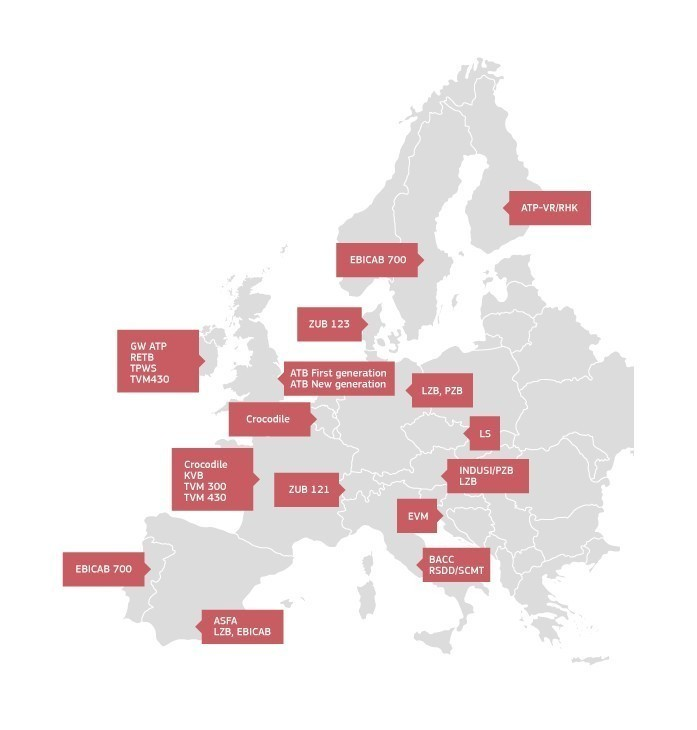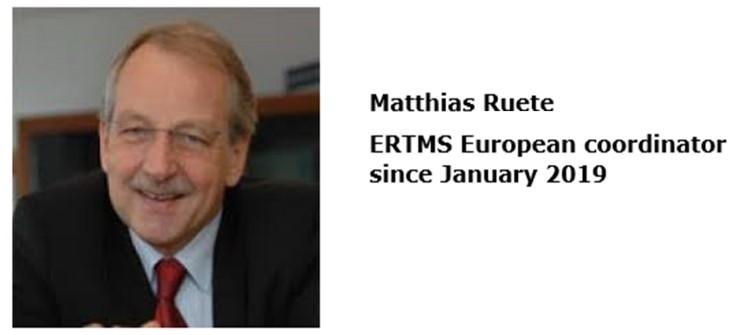Before ERTMS was conceived, almost every single country used to have its own Automatic Train Protection System (ATP). Normally these systems were not compatible with each other and thus crossing a signalling area border meant that trains needed to implement several onboard ATP devices, each of which was self-functioning. Due to the increase in international rail services, a harmonised ATP system is needed for the European context. Thus, the aim of ERTMS was (and is) to gradually replace the different national ATP systems in European countries.

With this status, in the 80s, the first discussions took place between European railways on a harmonised approach to train management systems in Europe. Research projects were launched by the European Community and implemented by stakeholders.
At the end of 1990, a group of infrastructure managers with shared interests (ERTMS Users’ Group) created the initial version of ERTMS as we know it, intending to demonstrate the feasibility of railway interoperability. At the outset, the ERTMS User Group (EUG) consisted only of experts from infrastructure managers. Still, they detected relatively quickly the need to involve signalling suppliers in the finalisation of the ERTMS technical specifications.
The 1996 EC Directive on interoperability for high-speed rail (Council Directive 96/48/EC) introduced the concept of an interoperable control and command system and signalling and defined the characteristics of ERTMS, albeit limited to high-speed rail.
The organisation of signalling companies, i.e. UNISIG, produced the first ERTMS technical specifications in 2000. It was in 2002 that the European Commission included the ERTMS specifications in the control command and signalling technical specifications for interoperability of the trans-European high-speed rail system (Commission Decision 2002/731/EC). Later, in 2006, the first control command and signalling technical specifications for interoperability of the trans-European conventional rail system (Commission Decision 2006/679/EC) were issued by the European Commission. The command and signalling technical specifications for interoperability (Commission Decision 2012/88/EU) were merged only in 2012, covering both high speed and conventional railways since then.

In 2005, the sector produced the
(MoU) focused on deployment strategies. In order to facilitate the implementation of that MoU, also in 2005, the European Commission appointed Karel Vinck as the first European Coordinator for ERTMS.
In 2008,
improved the previous one by including the previous ERTMS experience and specific planning requirements for ERTMS deployment in some Member States. This MoU thus established the first reference version of the system and the backwards compatibility principles in order to protect previous investments and commitments. It also specified the next steps that would be taken to meet the additional needs for the rest of the planned deployments.
This second ERTMS MoU was intended to be used as a reference document for all stakeholders involved in ERTMS, since it ensured coordination in the updating of the specifications, the addition of new functionalities or policy measures content.
In 2012, both previous ERTMS MoUs were revised, and a new
was signed, aiming more specifically at fixing the main objectives of cooperation between the ERTMS stakeholders while maintaining the main principles already defined in the previous ERTMS MoU.
On 22nd December 2014, the ERTMS Coordinator at the time, Mr Karel Vinck, communicated his
. The European Coordinator had to take action, given that introducing ERTMS in all Member States needed coordination and a well-planned migration strategy, and therefore the actors involved in the system (IMs, RUs, etc.) needed to coordinate their deployment strategy with the strategies of other actors in the system.
Since the previously foreseen deployment of ERTMS outlined in chapter 7 of the CCS TSI form (2009/561 and amendments) had not been as agile as planned, the European Coordinator came up with the above mentioned Breakthrough Program to try to boost the implementation process. The main principles set by Mr Vinck in his Breakthrough Program are that every ERTMS-equipped vehicle should be able to run everywhere in Europe and that the ERTMS activities should be focused on the users first and not designers, achieving deployment of ERTMS while obtaining a reduction in its costs.
In July 2016, Mr Vinck presented his second work plan after consultations with the Member States and Infrastructure Managers. This work plan summarises the achievements on the breakthrough program so far and sets a proposal for the Member States on a new implementation timeline for deploying ERTMS.
In 2016, an
was adopted to formalise an integrated management process for ERTMS deployment in Europe. This MoU puts in place the framework to give legal and technical certainty to a train equipped with the latest ERTMS release to run on any compatible line with an acceptable level of performance. It also requires mature management of this software-based system, with customers and suppliers introducing appropriate clauses for software maintenance in their contracts.
The MoU framework takes into account the results of the Longer Term Perspective initiative, future game-changers for the digitalisation of the rail system, and accounts for the new competencies of the system authority, the European Union Agency for Railways, under the 4th Railway Package.
After a last consultation with the Member States on 7th December, the reviewed European Deployment Plan was proposed for adoption and finally published on 5th January 2017.
Throughout these years of ERTMS development, the technical specifications have included two different Baselines, i.e. two stable kernels of system functionality, performance and other non-functional characteristics. The first reference version of the system was Baseline 2. In 2015, the revised CCS TSI (Commission Decision (EU) 2015/14) included additional functions to the system kernel that is referred to as Baseline 3 maintenance release 1. Then, in 2016, Baseline 3 release two was issued with the inclusion of GPRS in the GSM-R specification.
ON 1st January 2019, Mr Matthias RUETE, former Director-General in the European Commission, became the European Coordinator for ERTMS. His
was published in May 2020.
Significant steps have been taken in recent years to address core issues relating to the achievement of an interoperable rail system based on ERTMS:
- Fourth Railway Package: the technical pillar of the Fourth Railway Package provides for essential changes concerning ERTMS. It enhances the role of the European Union Agency for Railways (ERA) as the ERTMS system authority. The set of measures introduced by the Fourth Railway Package and the 2019 revision to the CCS TSI (Commission Implementing Regulation (EU) 2019/776) enables more efficient authorisation processes and leads to enhanced interoperability and compatibility between onboard and trackside subsystems. Based on the Fourth Railway Package, ERA is in charge of issuing vehicle authorisations and safety certificates in the European Union, as well as pre-authorising ERTMS trackside equipment. The Member States (MS) are obliged to transpose the technical pillar of the Fourth Railway Package by 16th June 2019 or, if notified to the Commission and the ERA, by 16th June 2020.
- Stability of specification: the Baseline 3 release 2 is considered functionally complete and has been stable since 2016. It is maintained by the ERA Change Control Management (CCM) process that addresses backward compatibility and protection of investments.
- The ERTMS European Deployment Plan (EDP): the EDP lays down target dates until 2023, by which time about 30-40% of the Core Network Corridors should be equipped.
- ERTMS: The way ahead, (Action plan): the Action plan sets out the steps beyond the legislative framework to address challenges to interoperable deployment.


